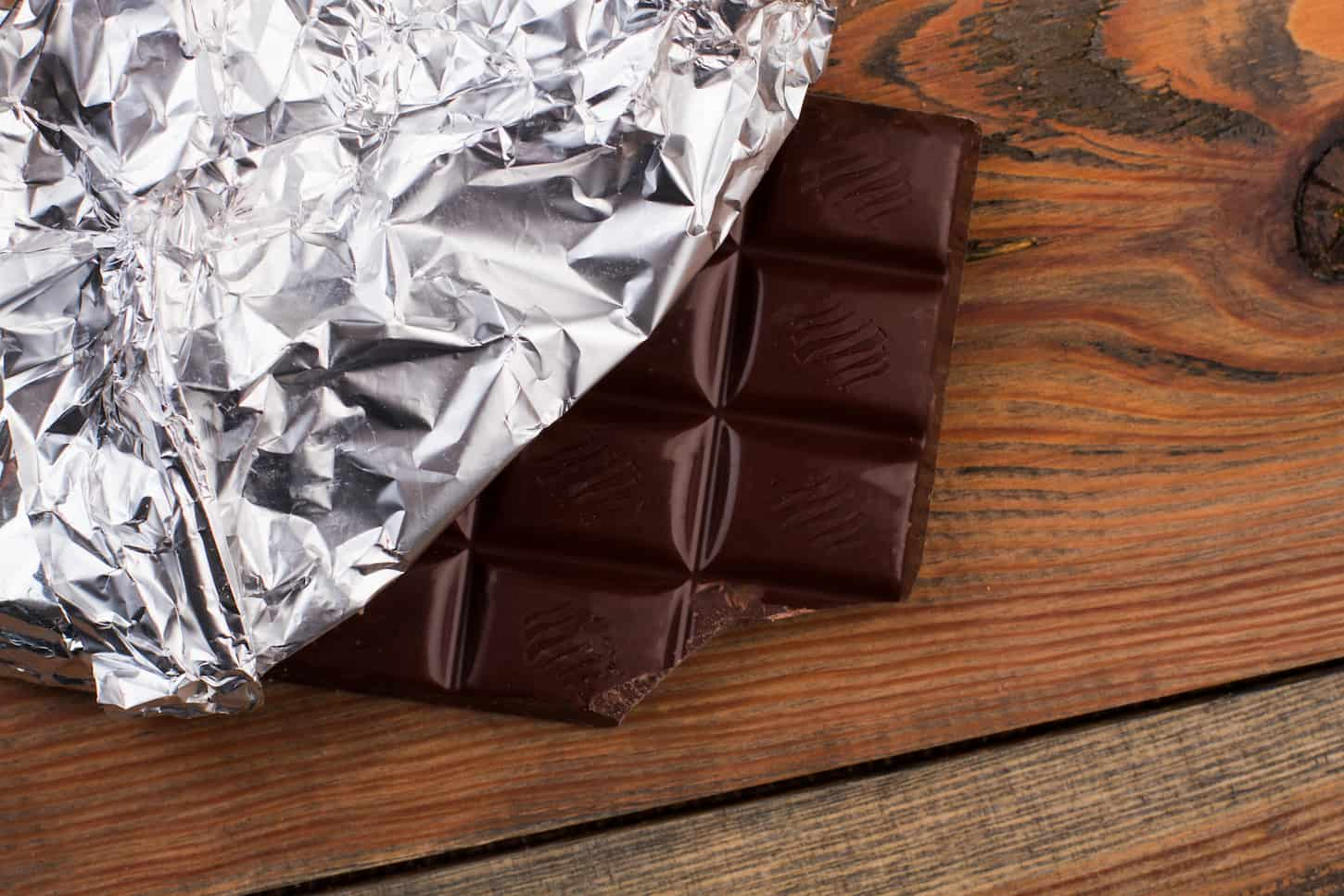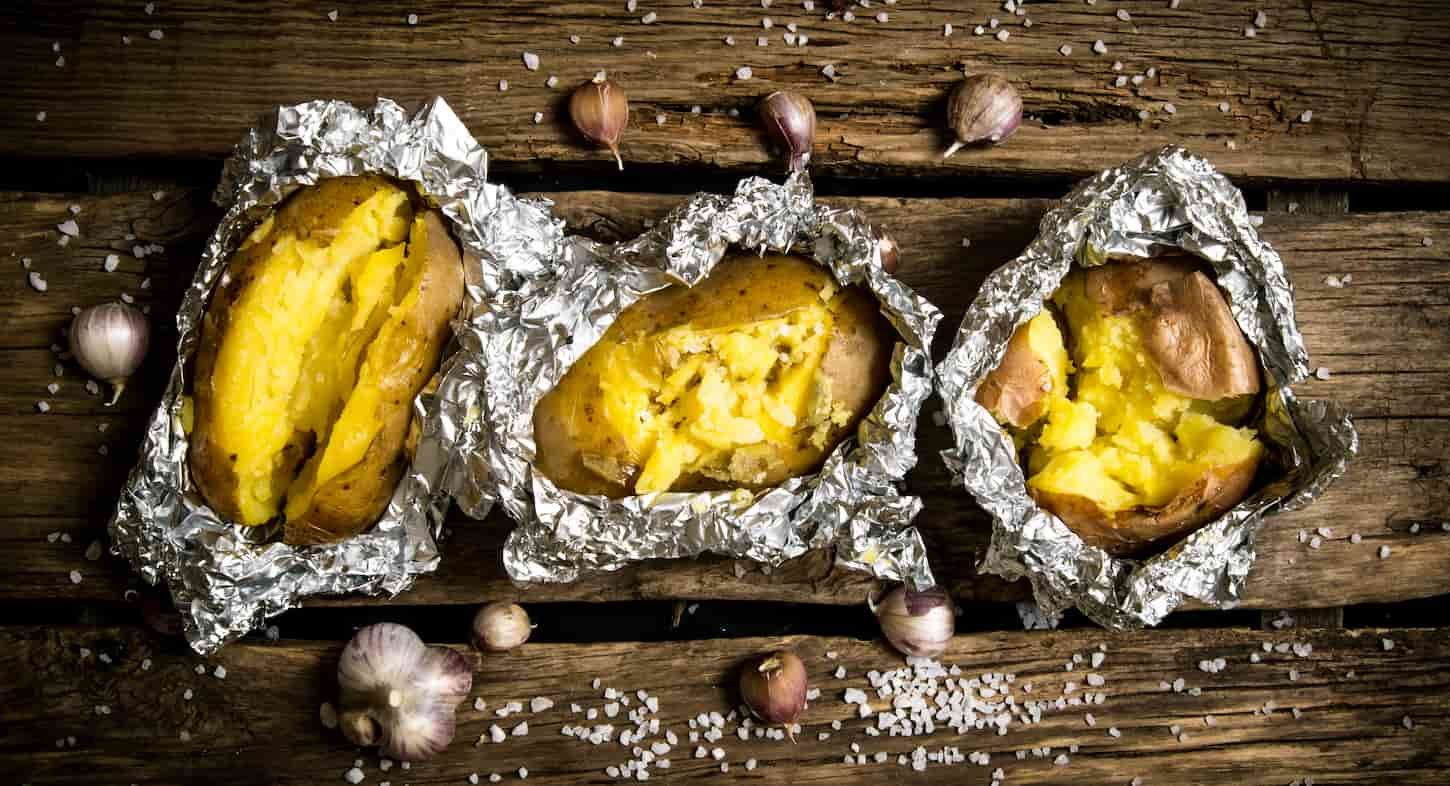Being able to freeze food is an amazing thing. We use our freezer to prepare foods for the freeze dryer, store freezer meals, and to store leftovers. But when I run out of freezer plastic bags (or I’m trying to find a better option that’s not plastic), it’s totally normal to wonder if you can freeze food in aluminum foil.
Freezing food in aluminum foil is safe, and economical, and is an approved way (by both the USDA and FDA) to store foods for up to a year in a deep freezer. Freezing food in aluminum foil properly can keep frozen foods fresh and free from freezer burn.
Ready to talk about storing food in aluminum foil – and answer some commonly asked questions? Let’s do this.

How to Freeze Food With Aluminum Foil
Freezing food or leftovers is an effective way to avoid food waste. However, freezing food without any protective wrapping will cause freezer burns and you will not like the taste of freezer-burned food. According to the US Department of Agriculture, aluminum foil is one of the safest and most economical ways to freeze food and avoid freeze burns.
Aluminum foil is moisture resistant and does not crack when stored at low temperatures, which makes it an ideal candidate for protective wrapping in the freezer.
The main objective of using aluminum foil is to prevent the food from getting in contact with the air. As soon as the air gets in contact with the food’s surface, it will dehydrate it, causing a change in the food’s odor and taste. That is why it is imperative to completely seal the food with the foil.
If the food that you are storing has pointy edges, then make sure to pad the edges properly so that it does not poke holes in the foil. Double wrap the edges, if need be. To preserve the optimum quality of the food, tightly wrap the food to force out as much air as you can and keep the temperature of the freezer below 0° Fahrenheit.
So to recap, here’s how to wrap and freeze food with aluminum foil.
- Make sure the food is cool (to avoid leaching).
- Pad any sharp corners.
- Wrap the food in aluminum foil as tightly as possible.
- Freeze the food below 0 degrees Fahrenheit.
The most important thing to note here is that you should not use aluminum foil to freeze food that has just been cooked. This is because, the hot temperature of the food may interact with the thin foil sheet, causing some of the aluminum to mix with the food, a process known as leaching.
Leaching happens when aluminum from the foil gets absorbed by the food. Leaching can increase the aluminum content which can cause health problems. It is also advisable not to store acidic products in aluminum foil either, as acidic products absorb aluminum at a quicker rate.
How Long Does Food Keep When Frozen in Aluminum Foil?
How long a product can be frozen depends on the product as well as the type of aluminum foil used.
- To store food for less than a week, then a standard/normal aluminum foil will do the job.
- If you want to store food for any amount of time longer than a week, then use a heavy-duty aluminum foil.
Fruits and vegetables can be stored in aluminum foil for 8 to 12 months. Recommended storage time for herbs is about 6 months. For bread, it is advised to use it within three months. Leftovers can be stored for two to three months. Furthermore, for poultry, fish, and meat products, you should use them within their approved storage period.
Table 1 shows some products and their recommended storage period.
| Product | Storage Period |
|---|---|
| Bread | up to 3 months |
| Fresh fruits and vegetables | 8-12 months |
| Herbs | up to 6 months |
| Ham | 1-2 months |
| Cooked Fish | 2-6 months |
| Bacon and Sausages | 1-2 months |
| Cooked Meat | 2-3 months |
| Cooked Poultry | 4 months |
| Uncooked (Raw) Poultry | 9-12 months |
| Uncooked (Raw) Pork Chops | 9-12 months |
| Uncooked (Raw) Steaks | 8-12 months |
| Leftover foods | up to 2-3 months |
Eating a product that has been stored for more than the recommended storage time may not cause any health problems. The recommended storage periods are to give you an idea of how long foods can be kept in the freezer and still taste like the original, fresh food.
If you’re okay with some taste degradation or change, then you can potentially store your food for an even longer period of time as long as it’s wrapped properly to keep air out.
That being said, do you really want to eat a peanut butter sandwich made of bread that’s been frozen for 6+ months? I know I’d prefer fresh bread!
Should You First Wrap Food in Plastic Before Wrapping it in Aluminum Foil?
Wrapping food in plastic before wrapping it in aluminum foil adds another layer of protection. Since plastic is more malleable, it can be used to make a tighter wrap and drive out more air than foil wrapping. This will allow you to store food for a longer period of time and help prevent some food (like fruits and vegetables) from turning brown. Moreover, plastic is more flexible than foil, so it is less likely to get poked by a pointy end.
However, the biggest advantage of using plastic foil before aluminum foil is that it can be used to wrap citrus fruits and vegetables. As mentioned above, if a citrus product is directly wrapped in aluminum, then it will absorb the aluminum from the foil, leaving an unpleasant blue residue. Since plastic does not react with acidic substances, this problem will not arise with plastic wrapping.
The problem with plastic wrapping is that it is even less resistant to heat than foil, so you should avoid exposing the plastic-wrapped food to excessive heat.
Keep in mind, though, that adding another layer of wrapping does increase the overall cost of food storage and does mean using plastics to store your food. The overall cost is still usually less than a freezer-grade plastic bag, though.

Are there Other Ways to Store Food in The Freezer With Aluminum Foil?
Aluminum foil pans can be used to freeze products. They are easy to use and are available in many sizes for you to make different size portions. After putting the food in the pan, you can use plastic, foil, or both to wrap the top of the pan. Make sure you properly seal it so that no air gets in contact with the food.
Since aluminum is a good conductor of heat, the aluminum pan will freeze food in an efficient manner. This option will also save you the hassle of washing dishes. After heating the frozen food, you can directly eat the food from the pan and then throw it away in the recycling bin. Voila!
The other viable option is to use your baking dishes to freeze food. Baking dishes made of glass and ceramics are good candidates for freezing food. Again, you can use either plastic wrap or aluminum foil to wrap and seal the top. One thing to remember when using baking dishes is that you should not take the frozen dish and put it straight into the hot oven. If you do that then the molecular structure of the dish might get disturbed and the dish might break.
You can read more about freezing and storing food in Pyrex dishes in my article here. It’s a good read full of information that’ll change how you store food. Go give it a read next.
One common benefit of both the above options is that you can easily label when and what have you stored in a container. Do this and you will never again open a casserole when you wanted to eat steaks.
Are there Other Ways to Store Food in The Freezer Without Aluminum Foil?
Freezer bags are an inexpensive, alternative way to store foods in a freezer. Freezer bags are made up of low-density and thicker plastic which makes them hard to tear or puncture, thereby keeping the food fresh for a longer period of time. Freezer bags are moisture and vapor resistant and some can be easily vacuum-sealed to make sure no air is present in the bag while freezing.
Don’t forget to label the freezer bag before putting in the food because once you have placed the food, then it becomes tricky to write on the bag!
Another option is to use plastic or glass containers. If you are using a glass container then make sure it is a freezer-safe container because some glasses crack at low temperatures. When using these containers, it is advisable to leave some headspace, especially if you’re freezing vegetables, so that the containers are not damaged when the food starts to expand.
Want to learn about using Mylar bags to store foods in the freezer? Read my article on freezing foods in Mylar bags next.
You can also use Mason jars to freeze your food. Cool your food before placing it into the jar and always leave a little headspace. Both, glass containers and mason jars, are eco-friendly products and if you do not want to contribute to plastic pollution, then you should consider these alternatives.
Moreover, if you are conscious about your nutrition intake and worry that using aluminum products might increase your aluminum intake, then the aluminum-free options are for you. Lastly, all the options mentioned above are recyclable – depending on your local recycling options, of course. So make sure you know your local recycling options.
Key Takeaways on Freezing Food in Aluminum Foil
Aluminum foil is an amazing product. We like to buy ours in bulk at Costco – it’s a better price there for the long-term, freezer-safe, heavy-duty stuff.
So now that you know more about freezing food in aluminum foil, make sure you check out some of the other food storage articles I’ve written on this site – like any of these personal favorites.
- Can You Freeze Beets without Cooking Them?
- 77 Foods You Can Freeze Dry and 17 You Cannot: Complete Guide
- Can You Store Food Outside in the Winter?
They’re all good reads. But fair warning – food storage is a fun rabbit hole. So be prepared to get lost in some awesomeness. I’ll see you in the next article, friend.
Resources
Learning from your own experience is essential, but learning from others is also intelligent. These are the sources used in this article and our research to be more informed as homesteaders.
- “AskUSDA.” USDA, ask.usda.gov/s/article/What-materials-are-safe-to-freeze-food-in.
- How to Make Food Last Longer by Freezing It. Seattle Public Utilities – Love Food Stop Waste, www.seattle.gov/Documents/Departments/SPU/EnvironmentConservation/FreezerStorageGuide.pdf.
- This video on YouTube (link opens in new tab).
